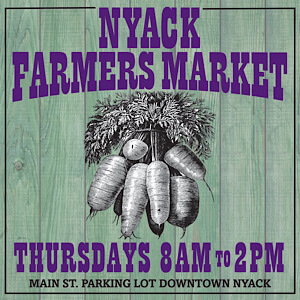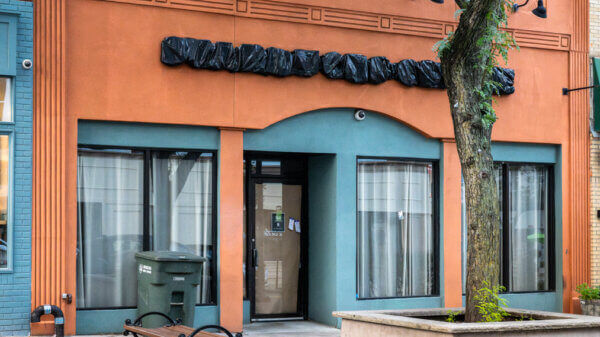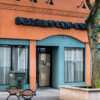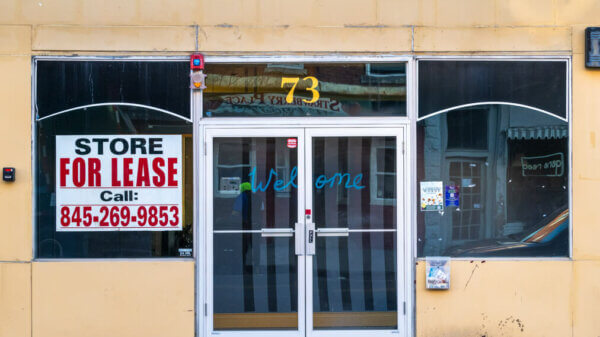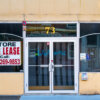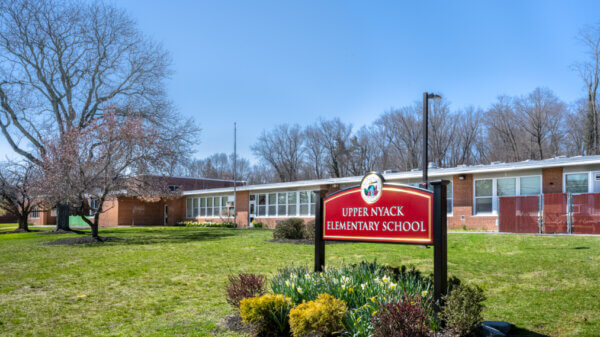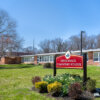“Once, my parents shopped here, back when there was no suburbia nearby and downtowns were meccas with a bunch of shoe stores, several pharmacies, two five-and-dimes, hat shops, dress shops, a bakery, meat stores, small supermarkets, and a soda fountain to relax in after shopping.
Art Gunther
But “progress” came, with strip shopping and malls and loads of cars on the roads. Downtown could not compete.”
Nyack Under Stress, 1955-1981
Nyack reeled from series of whirlwinds from 1955 to 1981. First, South Nyack was swept away, and Central Nyack carved in half by the building of the New York State Thruway. Second, the Tappan Zee Bridge opened Nyack up to suburbanites and baby boomers. The malls, E. J. Korvette in 1962 and the Nanuet Mall in 1969, with their acres of parking sucked all the customers out of Nyack’s once thriving business district.
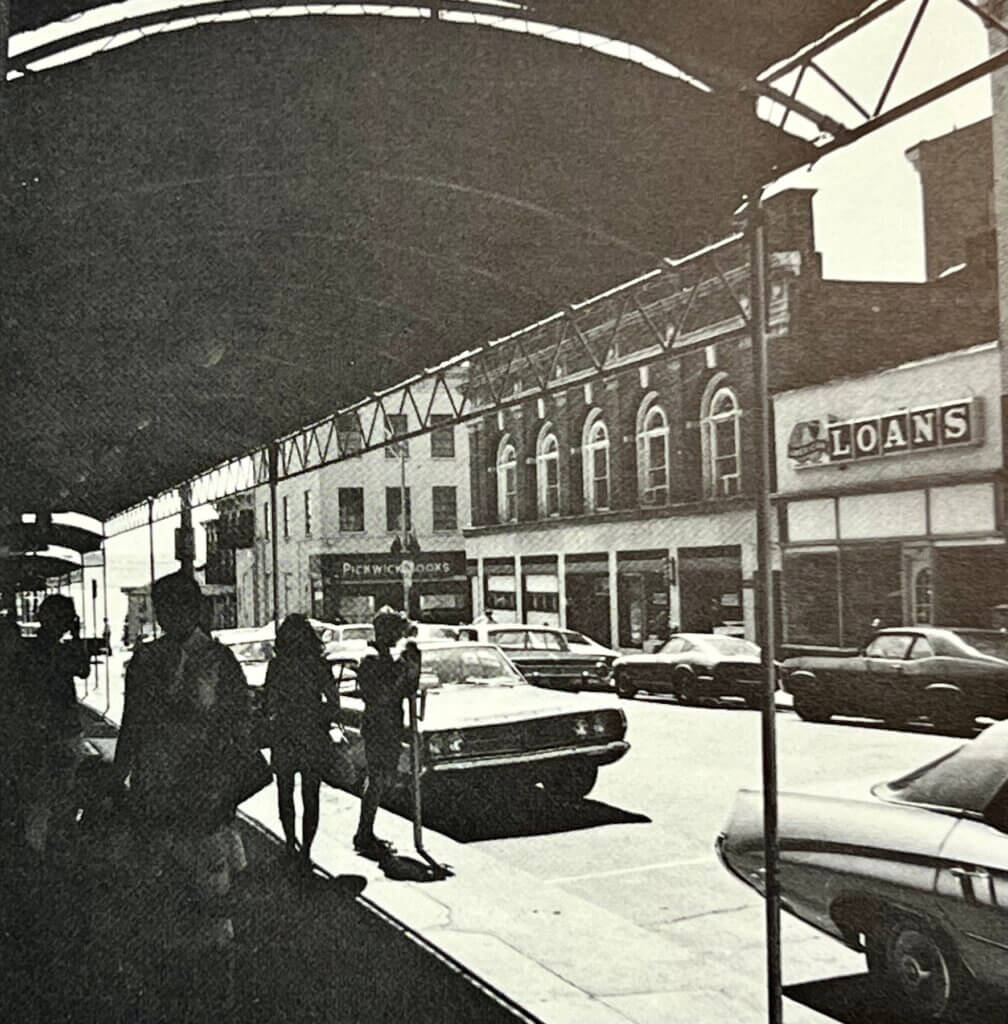
Third, urban renewal, or urban removal as some call it, swept away an entire culture of Black villagers along with part of downtown. In a further insult, three popular ice cream stores burnt down over a short period, McDermott’s Milk Bar in 1968, Hearne’s Confectionery in 1969, and Eagle Confectionery in downtown Nyack in 1971. On top of that, Nyack lost its innocence when domestic terrorists murdered local policemen in Central Nyack during the Brinks Robbery on October 21, 1981.
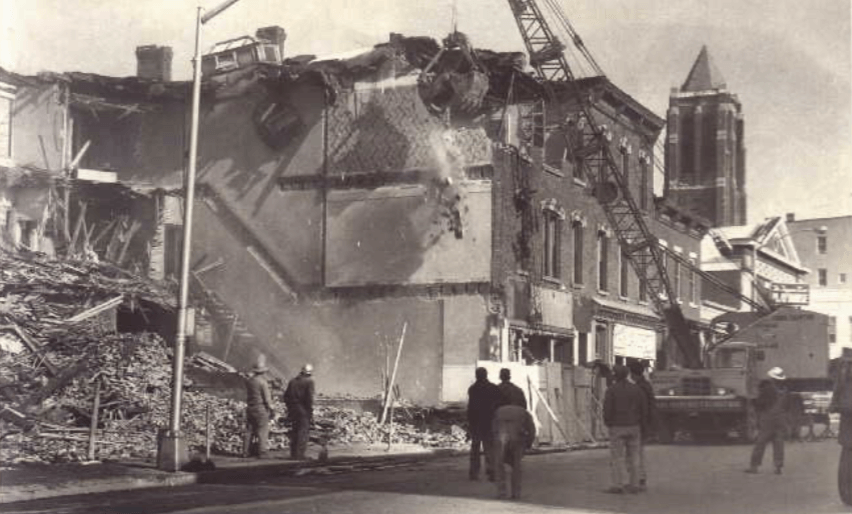
“I didn’t think the area was dangerous, it was just unkempt and disorderly. The main reason it looked so bad was because the people who owned the building had no stake in the community.”
Joe Christopher
Classic Nyack Stores Disappear
Classic Nyack stores like Neisner’s men’s clothing, Mae Moon and Van der Wahl’s women’s clothing, Lucky’s, Ellish furs, and Nyack five-and-dime were gone. Only one small clothing store remained. The village had no grocers, meat stores, bakeries, no stationery stores, no car dealers, and few real estate agents. The whirlwinds left a withered shell of a village albeit one with good bones.
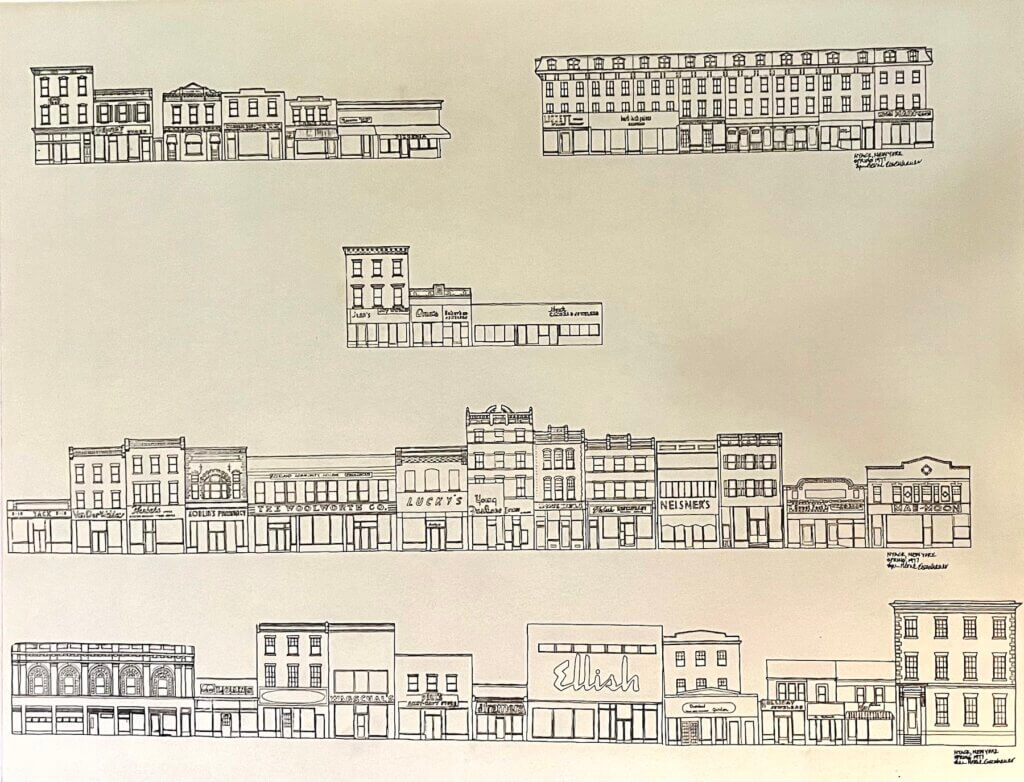
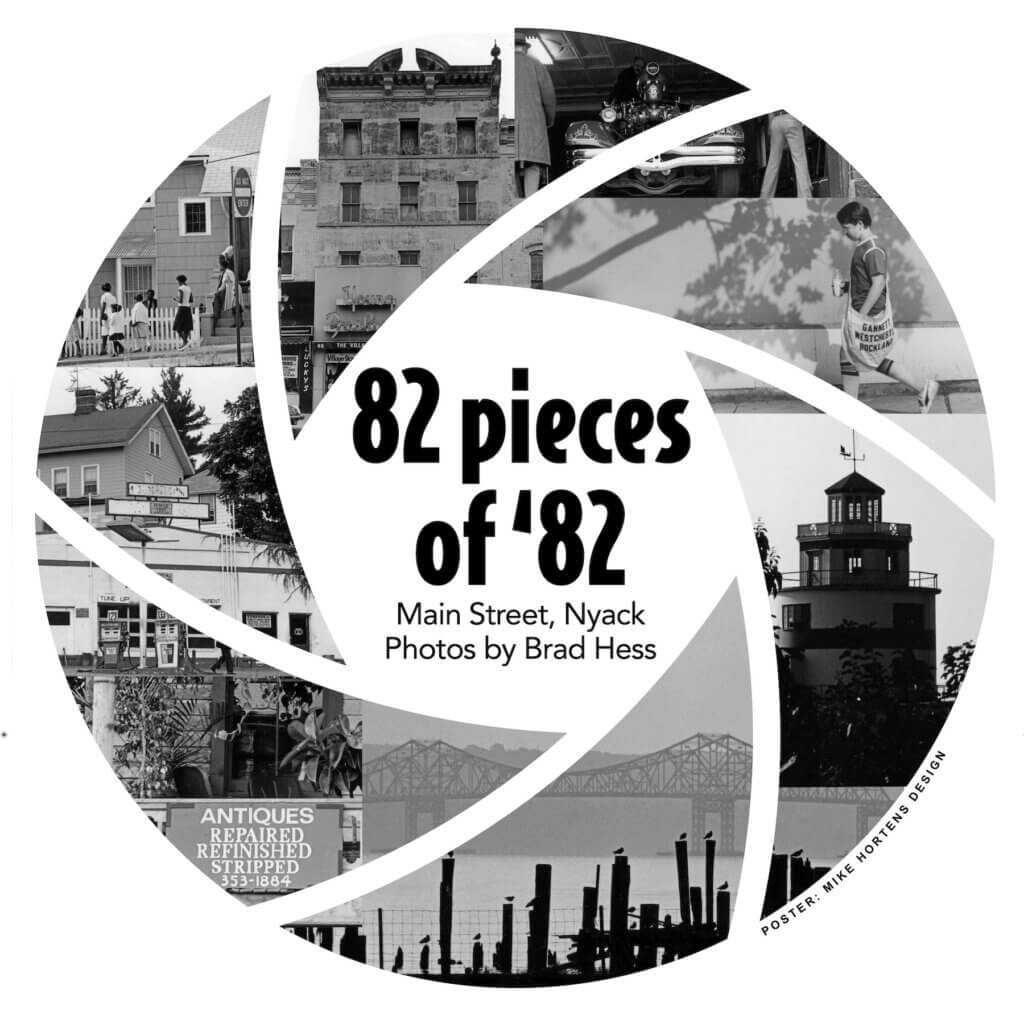
See Current Exhibit 82 Pieces of ’82 – Main Street Nyack
The Historical Society of the Nyacks 50 Piermont Avenue
The exhibit will be open Saturdays from 1 – 4 through April 15th
What Is an Antique?
Nyack became known as an antiques center. As Antique Roadshow has demonstrated, the definition of an antique is a broad term, encompassing items over 100 years-old, collectibles of any age, vintage items from recent periods, crafts, and artwork (for brevity herein the term “antiques” will be used). This “antiques” mix pulled Nyack out of the doldrums. 1982 was a peak year. The Arts, Crafts, & Antiques Dealer Association had at least 37 members.
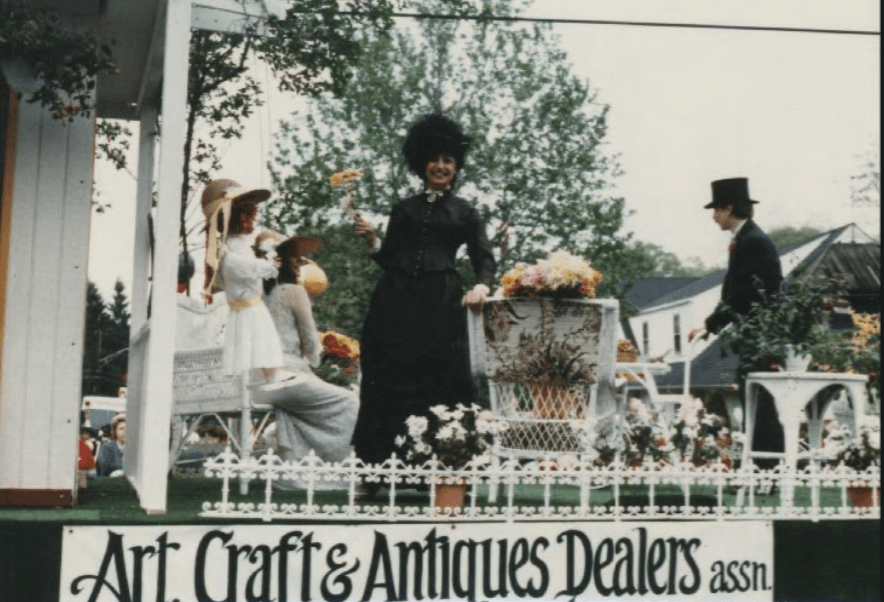
The association hosted street fairs in May and October in conjunction with the Nyack Chamber of Commerce. The 1982 fall street fair had 250 dealers from outside Nyack and 100 merchants from Nyack. Booths covered Main, Broadway, and reached down Burd St. On a good weather day, 20,000 people visited Nyack. Suddenly Nyack was attracting more people than it had in a generation.
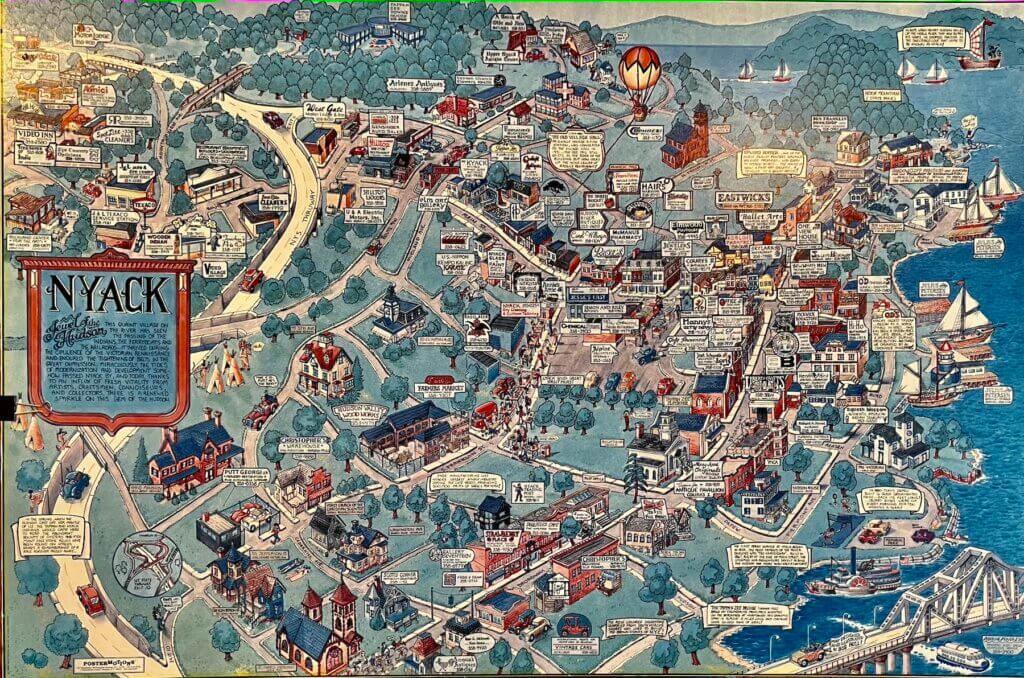
One could find residents like Helen Hayes, Ellen Burstyn, Mickael Baryshnikov, or Jon Voight wandering the streets, in a restaurant, or at the Nyack Farmers’ Market that opened on Cedar Street in 1979.
“Quality has value regardless of when it was made. What’s more, value is in the eye of the beholder. What you don’t like, somebody else does, so who’s to say?
Frank Mancione, owner, The Town Crier, 1982
How the Antique Era Started
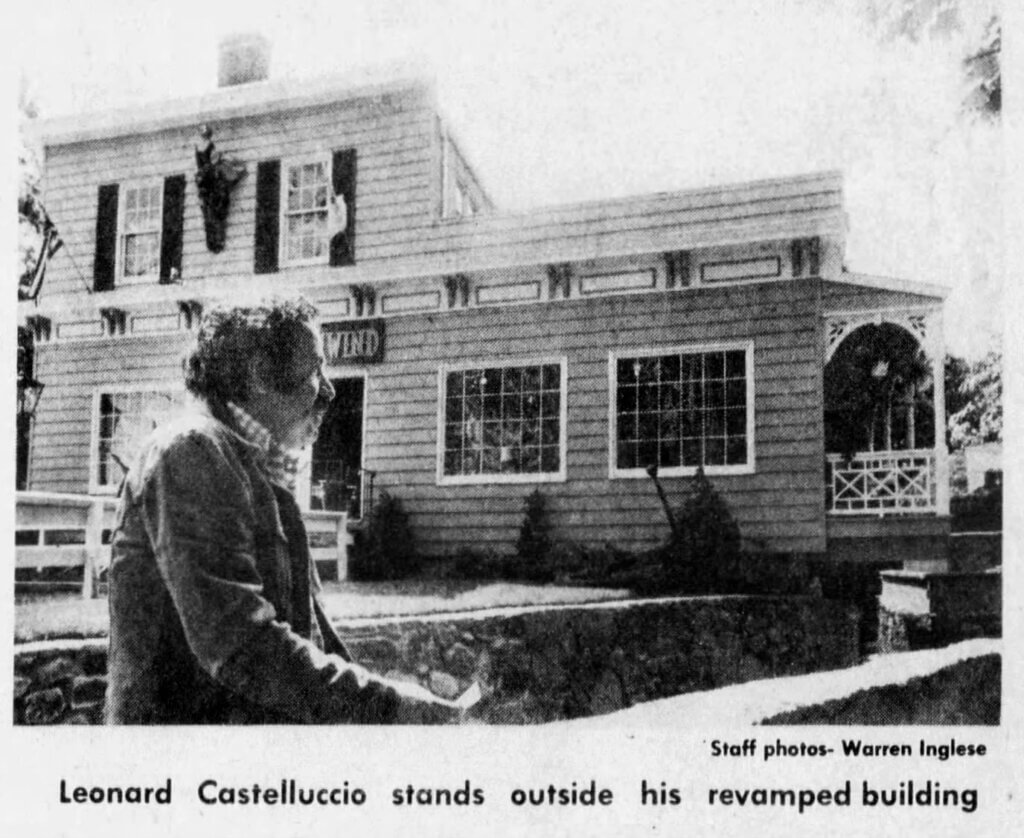
There wasn’t a single moment or event that ignited the antiques era in Nyack. But two shops and a few people are often credited as first movers. Area residents Leonard Castelluccio and Nathanial Cole built a low-rise building on the north side of the exposed Nyack Brook at 174 Main St. around 1966 and opened Gaslight Antiques. They sold all sorts of vintage brass objects. Their landscaping caught everyone’s eye with dogwood and iris blooming in the spring. They renovated and leased out a property to the west, housing the Kayak in Nyack containing several shops and a deli.
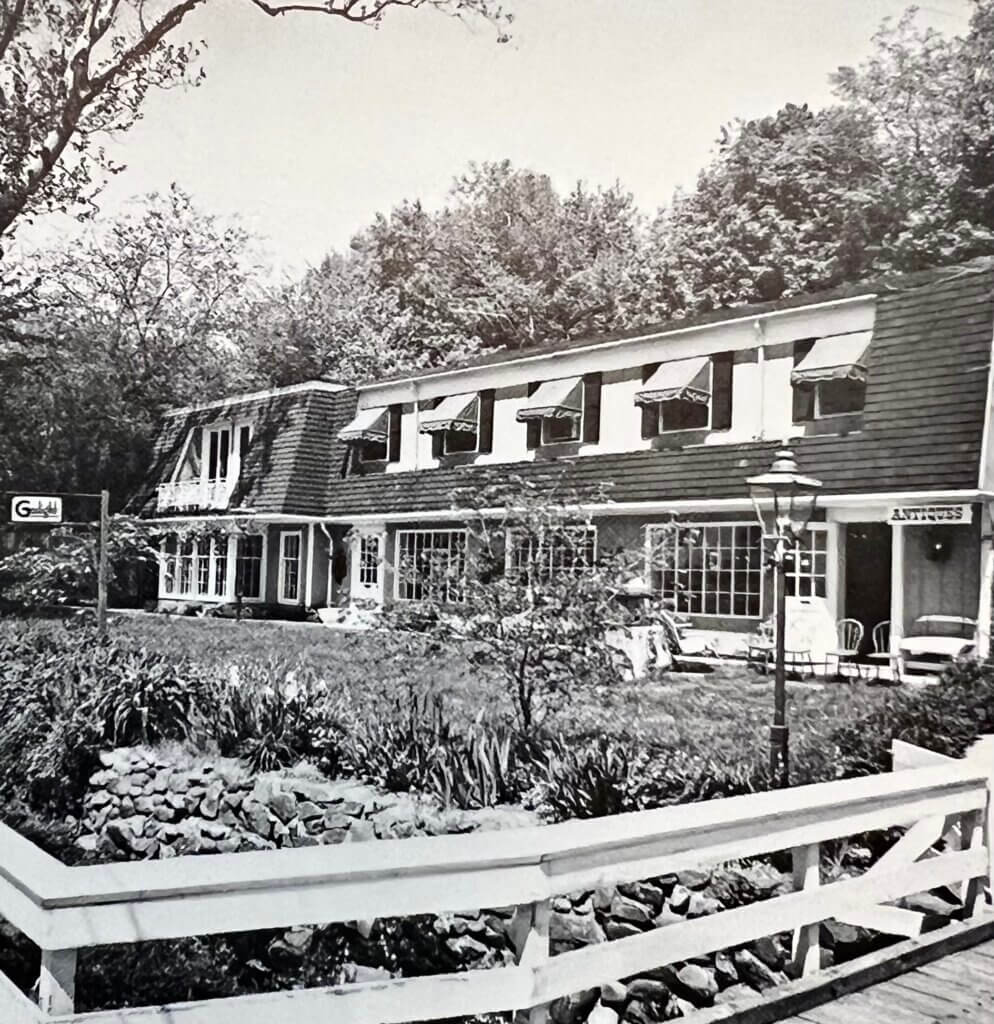
In 1966, The Arts, Crafts, and Antiques Dealers Association formed with 11 initial members including Castelluccio. The association grew quickly. A few years later, the Friends of the Nyacks formed bringing together villagers, the emerging arts community, recreation, and local businesses. Their walking tour maps of history and architecture proved to be very popular. Edward Hopper House was saved from destruction, renovated, and opened as a museum with exhibits starting in 1971.
The community was re-energized. At the June 1982 Rockland County Charity event held in downtown Nyack, a waiter’s race was held featuring 44 waiters from 22 restaurants who ran/walked two blocks in uniform, each with a tray holding a bottle and two half-full glasses. The person with the most wine in their glass was declared the winner. Over $250,000 was collected at the weekend event.
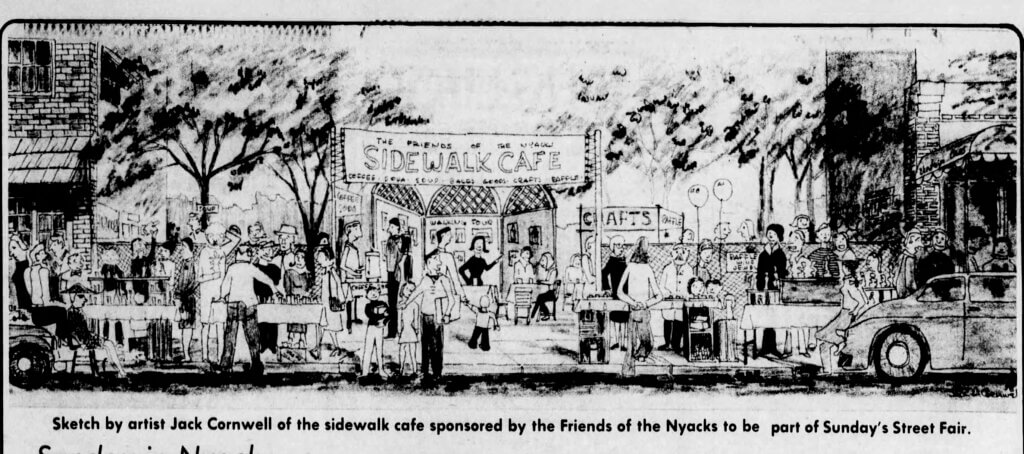
Howard Siegel, a partner of Joe Christopher for many years and later an owner of Christopher’s after 1999 described the period this way.
“We spent seven days and seven nights together for 23 years. It was such a bohemian lifestyle, we loved it. It was black and white, gay and straight, hippy and…hippy, poor or tons of money. Everyone intermeshed.”
Howard Siegel, New York Times
Christopher’s
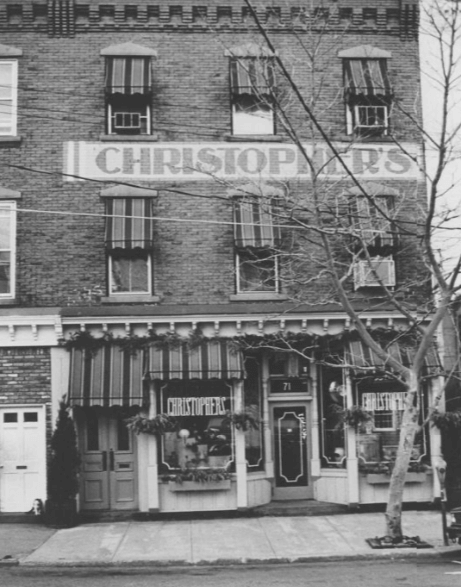
In 1971, Joe Christopher, a schoolteacher, opened Christopher’s at 73. South Broadway, a building he purchased for $35,000. His store became synonymous with Nyack antiques. Every shopper put the store on their must-visit list, trudging up and down all four floors. Joe had a keen eye for home furnishings, from antique furniture, baskets, and pots to plants grown in a greenhouse attached to the back of the lower floor. David Leader remembers the first day he set his eyes on Christopher’s.
“I couldn’t believe it; my eyes kept moving from one thing to another. I wanted to take it all in. I had never seen anything like it.”
David Leader, 2013, Nyack News and Views.
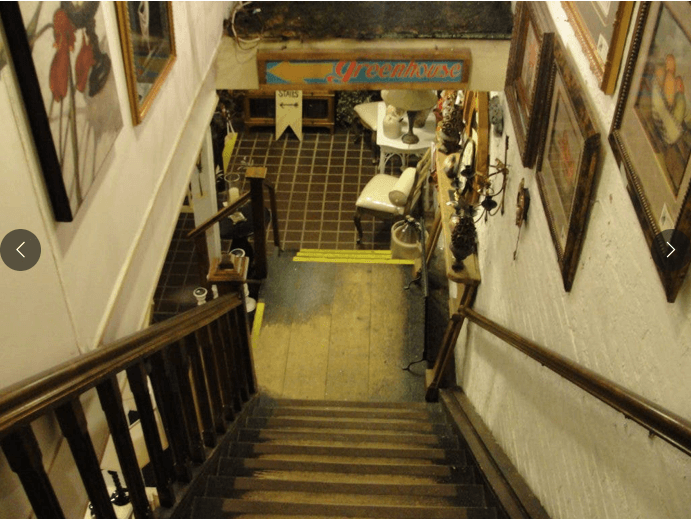
Demand was so great that Christopher’s Warehouse on Franklin Street and Christopher’s Reproductions on S. Broadway opened to give more space for furniture. The store lasted until 2013. The Christopher years, 1971-2013, bracket the era.
“I’ve found it to be the one of the best antique stores I’ve ever see in all my travels. Nyack will lose a part of its soul when Christopher’s closes.”
Melissa Peltier, Nyack resident, 2013
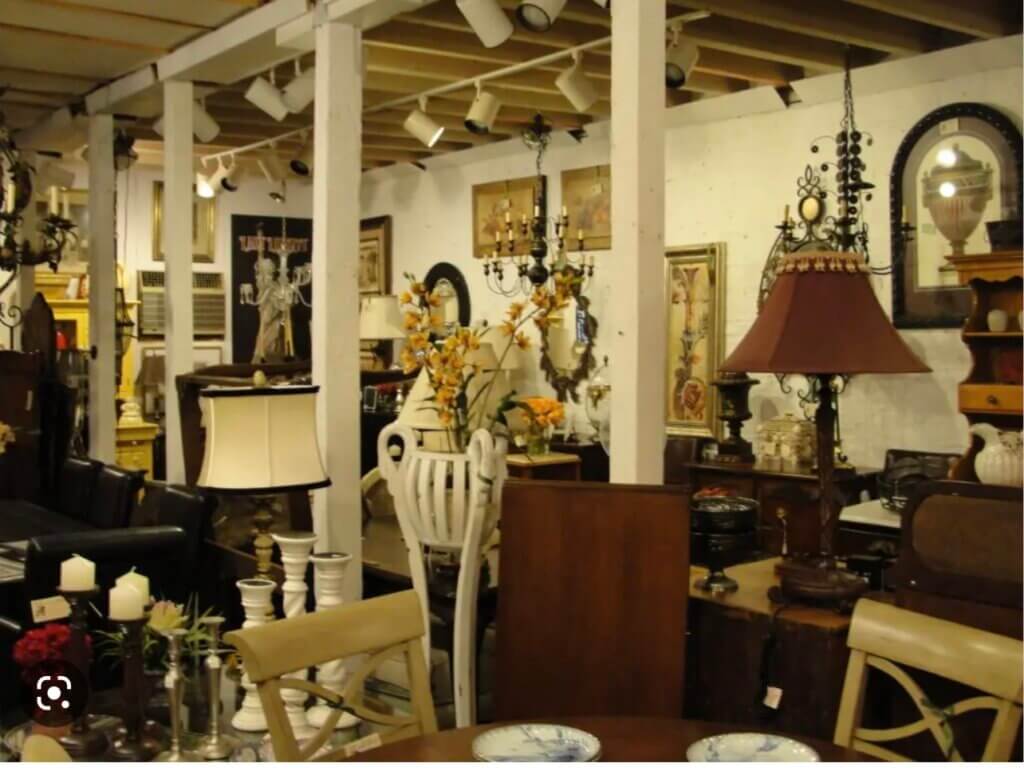
It Wasn’t Just Christopher’s
Christopher’s was not only a magnet for visitors, but his success also caught dealers’ attention.
“With almost a single impulse, several antique dealers who have been selling in Greenwich Village decide to move to a more congenial location, with extremely attractive rents. Like a small swarm of benign locusts, they settled in a depressed and nearly abandoned tenement block along Nyack’s South Broadway.”
Alan Rich, New Yorker 1982
Antiques Row
South Broadway earned the name “Antiques Row” because it was crammed with antiques, arts, and crafts sellers. Nearly every building from Cedar Hill to Hudson Avenues was filled to the brim with shops. Many sellers lived in the upper-level apartments Some 13 shops in that block advertised in the 1982 Guide to Nyack.
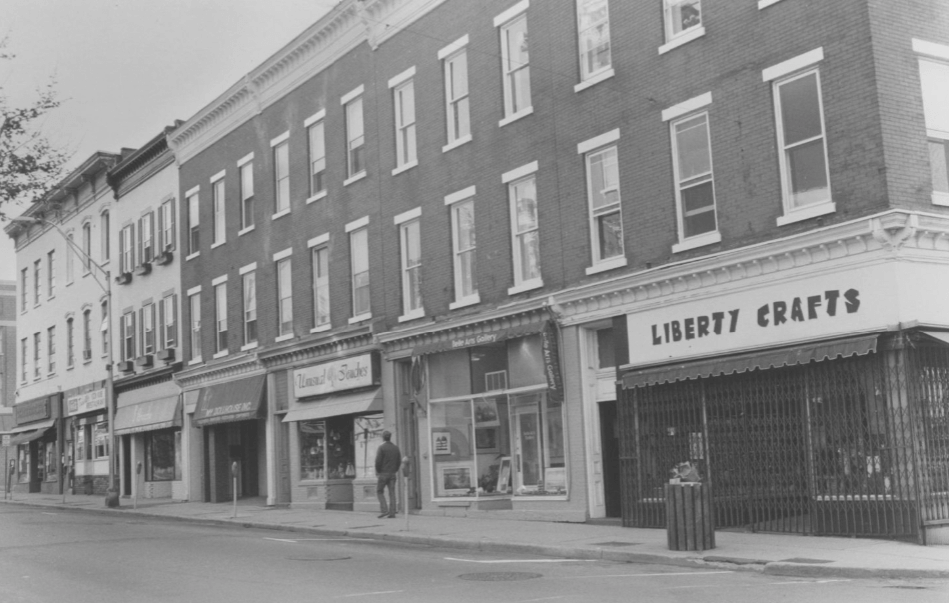
1984 photo of the east side of S. Broadway from Burd Street. Liberty Crafts was an important shop for many years. A close look will show Turiello’s pizza at 3 S. Broadway, second building from the left. Courtesy of the Nyack Library.
At the southern end, The Vintage Car Store filled an old Packard dealership at the corner of Cedar Hill Ave. and Broadway (now Fontana’s) with incredible one-of-a-kind and classic cars. Liberty Crafts held sway at the other end of Antiques Row at 58 S. Broadway with items from 175 designers and craftspeople including glass, porcelain, stoneware, jewelry, original graphics, candles, and more. Christopher’s capped the northern end of Antiques Row.
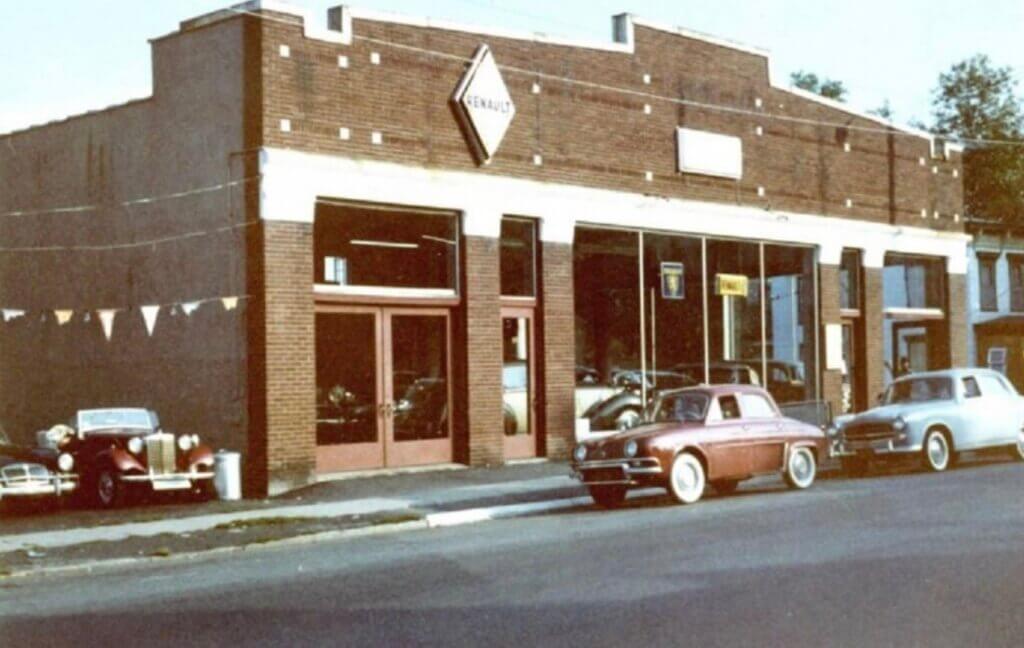
Further north on Broadway, The Tappan Zee Antique Pavilion occupied a building next to the YMCA that had once been an A&P grocery store from the 30s to the 60s. Just off Broadway, at 55-57 Burd Street, Storybook Antiques and Interiors occupied a pair of old frame building. Just a bit further down Burd Street, the St. George Hotel housed 10 different dealers. Near Main St., Hal Parker’s Burd House Frame Shop also contained a gallery. At the top of Broadway, the Nyack Book Store aka Pickwick’s occupied 1 S. Broadway in what is the oldest three-story brick commercial building in Nyack. Pickwick’s later moved to 8 S. Broadway.
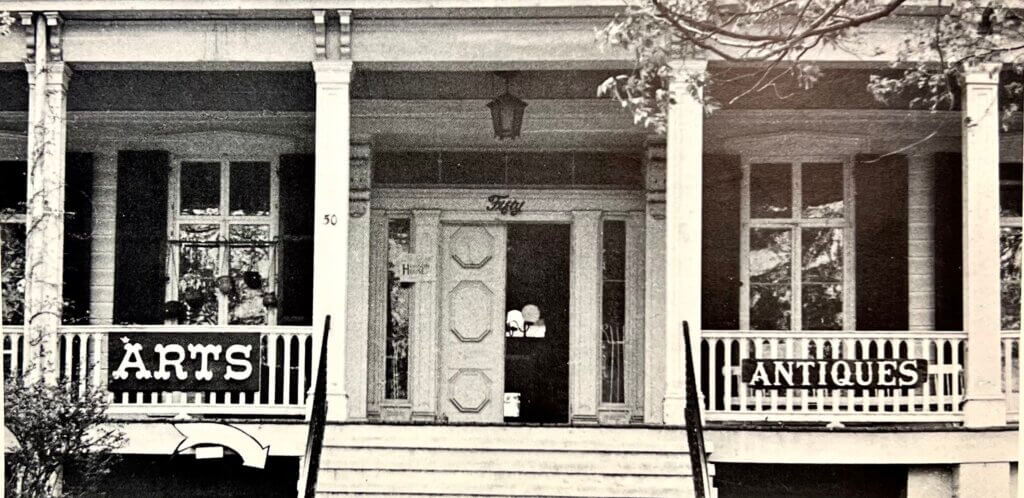
Main Street Antiques
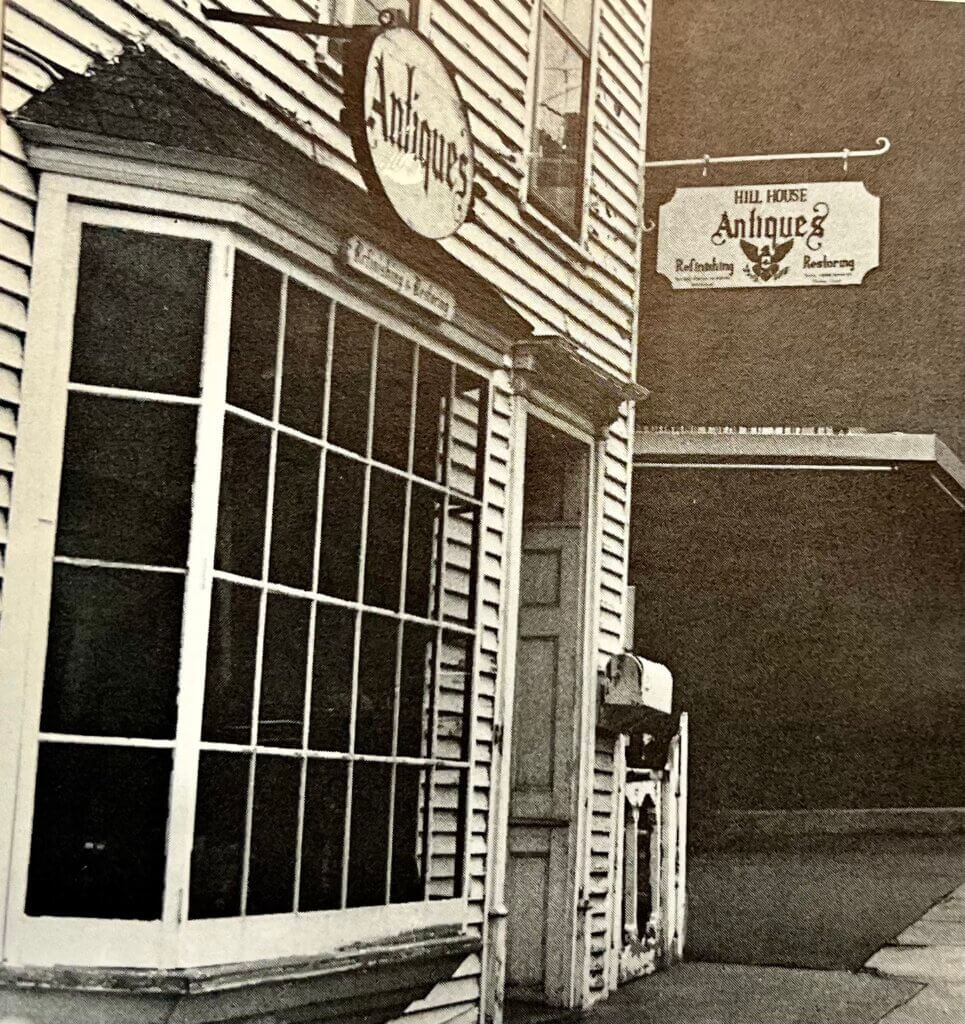



While not as intense as Broadway, Main Street also had many antiques shops. Shops like Crafty Fox and Functional Designs owned by the Stolldorfs mixed in with the few remaining old-time businesses like Koblin’s Pharmacy and Woolworth’s. Horsefeathers occupied the NW corner of Main and Broadway (now Turiello’s) with several vendors selling tools, rustic antiques, handmade crafts, jewelry, Icelandic sweaters, and Chinese groceries and utensils.
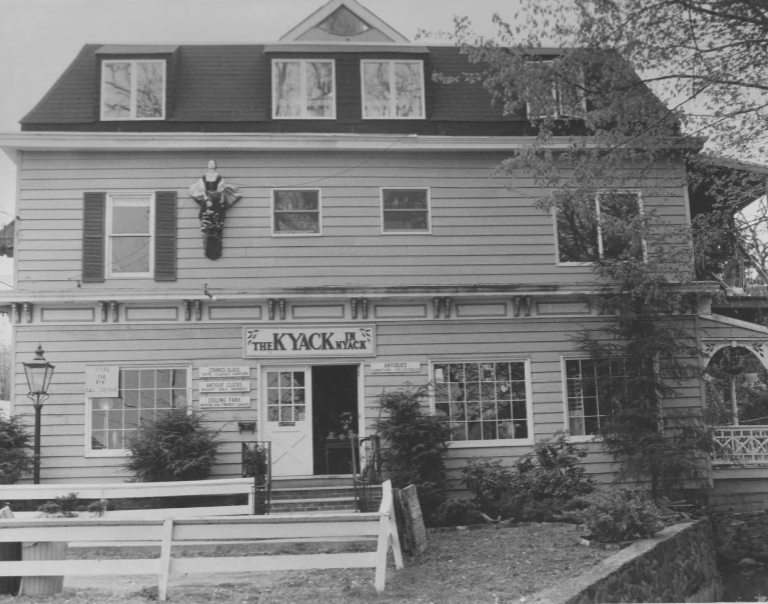
Further up Main Street the Franklin Mall (now Mainstream Commons) housed several dealers in a space that was once a Grand Union grocery store and before then the Lyceum Theater. Gloria Paul was just up the street from the mall. Gaslight Antiques, Kayak in Nyack, and other dealers occupied otherwise empty storefront and some homes all the way to Route 9W.
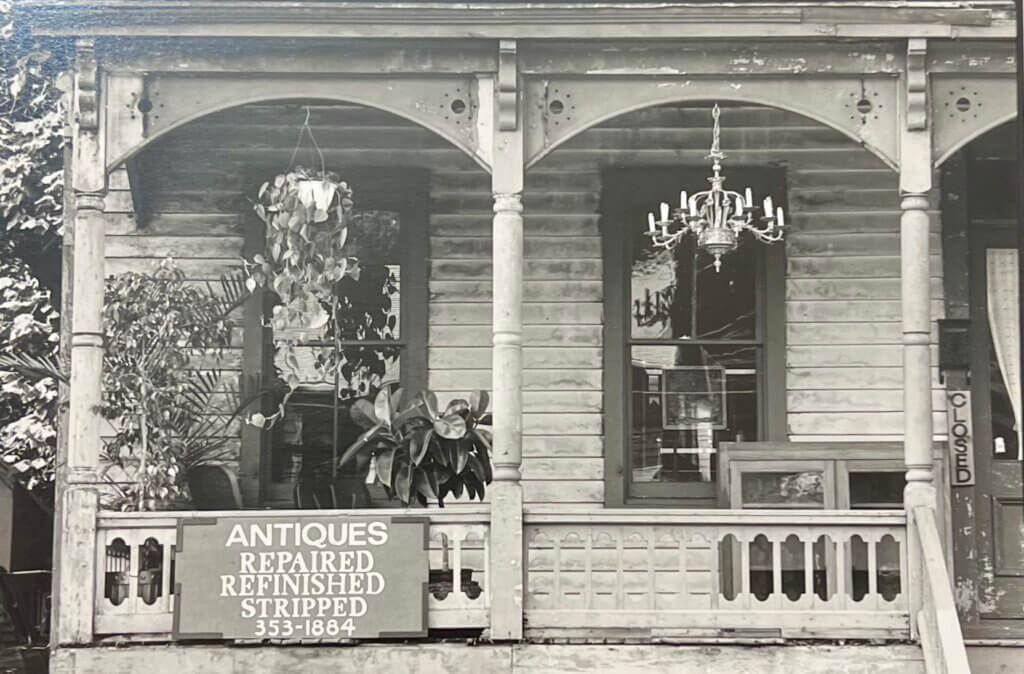
Upper Nyack Antique Center
Even the mostly non-commercial Village of Upper Nyack got into the act with the Upper Nyack Antique Center at 9W and Birchwood Ave. housing five different dealers and promising “we buy everything with cash”. The antique center once housed Pie Lady and Son for many years and is now vacant.
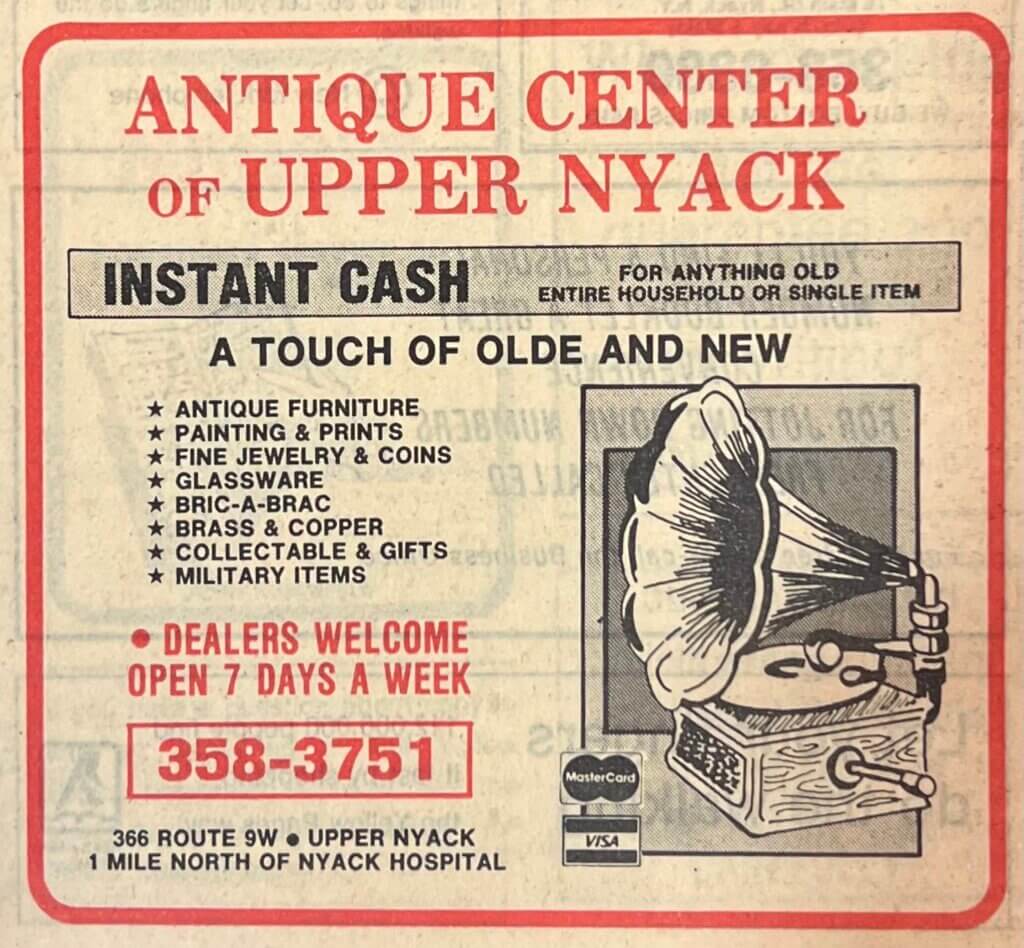
Rapid Growth of Restaurants
Today Nyack is a restaurant village filled with a wide variety of meal choices at all hours of the day. Nyack’s restaurant age started during the antiques era. Antique hunters needed to eat whether it was sit-down meal or take-out. As Joe Christopher stated,
“It used to be that the nucleus of the town was its antique store, but now I’m seeing more and more restaurants and inns moving into town. As luck would have it the chain restaurants had not come into Nyack. In their place was a growing diversity of different foods and experience.”
Joe Christopher, Hudson Valley Living, Spring 1983
Several restaurants survived the downturn in business downtown. The Rivers Angel Club, later became River Club, OD’s, and the Hi-Ho on lower Main Street, Skylark and the Office on Main west of Broadway, and Hilltop, home of lobster della fano at the very top of Main St. All had an old-time homey feel.
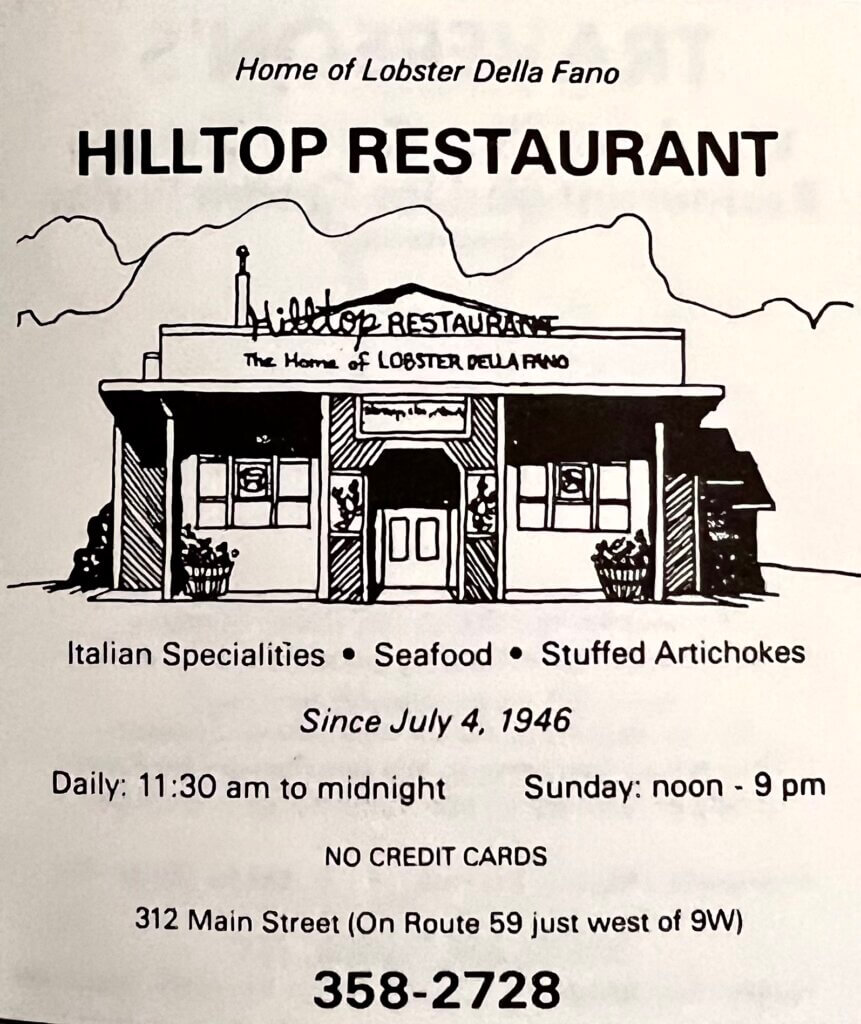
New restaurants
Ethnic newcomers joining the Main St. old-timers. Via Fettuccini and Tabla, an Indian restaurant, were in the Nyack Plaza, Herbal Gardens, Ichi Riki (now Wasabi), and One Potato, Two Potato, appeared on Main Street. Both Raoul’s and Ichi Riki earned laudatory reviews in New York Times restaurant sections. Tarantella and Turiello’s, then at 3 N. Broadway, then as now, dished out delicious slices, pies and more. Sneakers was the lone sports bar.
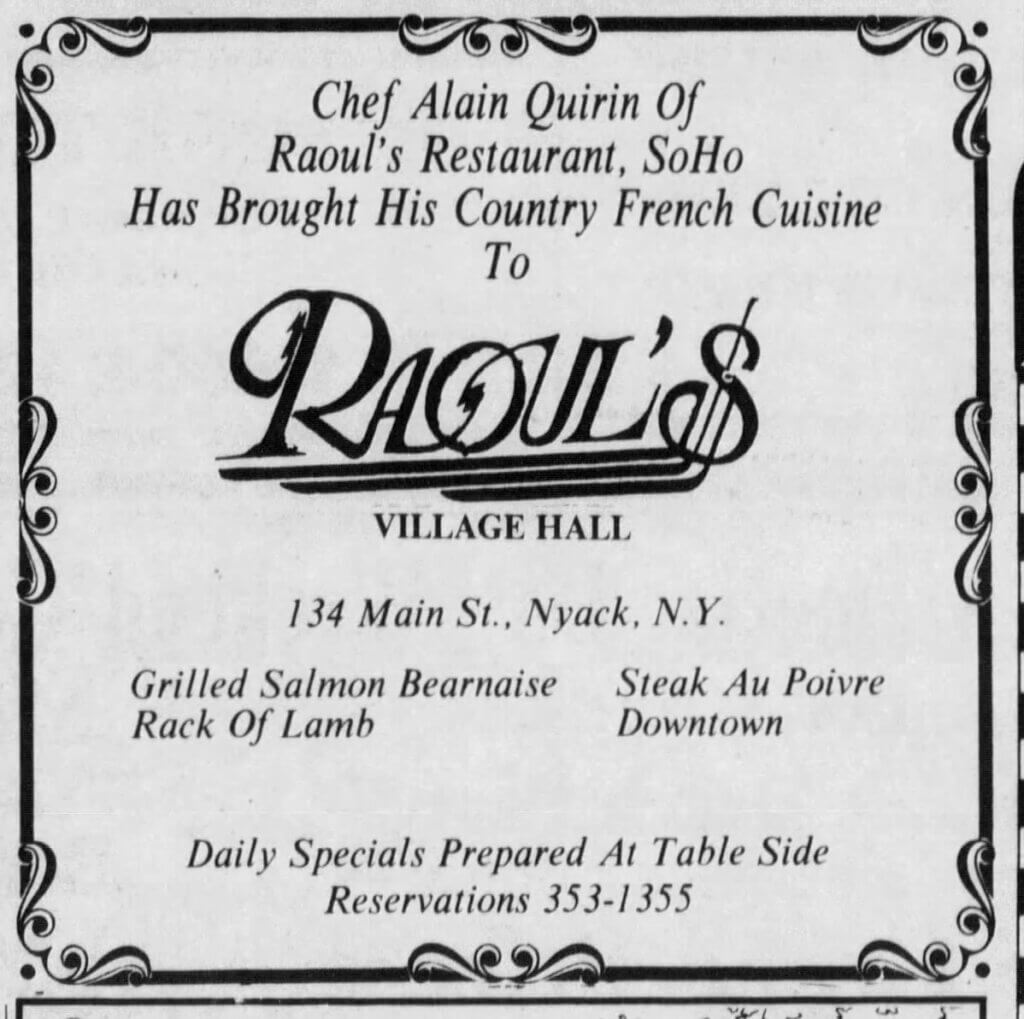

Raoul’s and Coven Café typified the new 1980s ambience in Nyack. Raoul’s (now Hudson House) under chef Daniel Leader and owner Serge Raoul (who also owns Raoul’s on Prince Street in Soho), put out a French-leaning bistro menu with escargots Polignac, escalopes de saumon cresssonere, and riu de veau aux champignons. New banquettes lined the dining room, and a huge mural of the old Tappan Zee Bridge and the Hudson River filled the west wall. It was expensive then at $30 for a meal. Raoul’s earned three stars in a New York Times review shortly after it opened.
“Once in a blue moon, I happen across a restaurant so special that we have to finish reviewing it. Raoul’s is such a place.”
Anne Semmers, New York Times
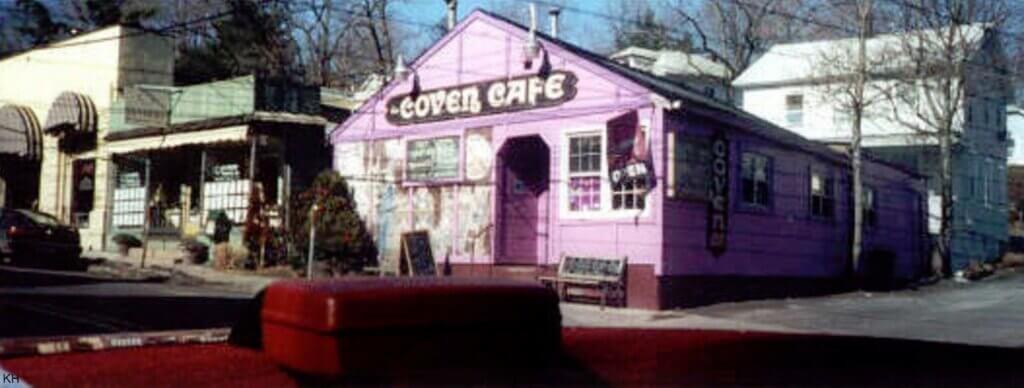
Also, in a class by itself, the purple-painted Coven Café, owned by Honey Jacobs and Vivian Chek, held live entertainment every night, brunch on weekends, and international and vegetarian specials. Bewitching gatherings took place with palm, tarot, and astrology renderings by their resident psychic, Rena.
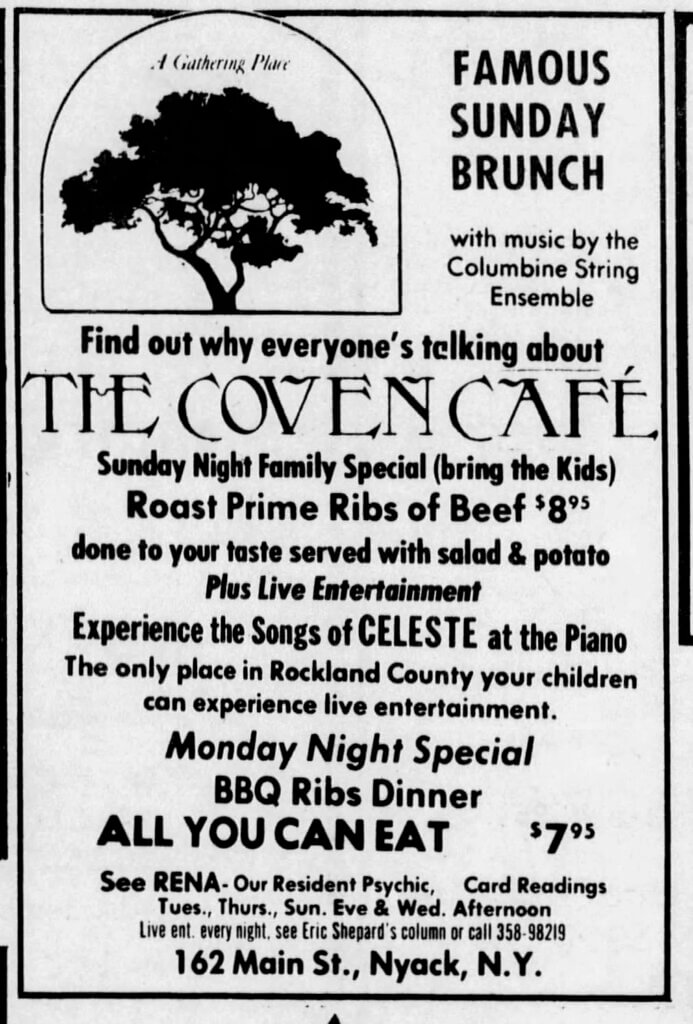
Restaurants on Broadway
On S. Broadway, Strawberry Place, a relative newcomer, was across from the Old Fashion (now Maura’s Kitchen). A French restaurant, L’Arc Provence occupied 9 S. Broadway. The Food Fetish at 64 S. Broadway was a forerunner of today’s coffee and cheese shops. The South Broadway Deli, the Nyack Village Deli, and, of course, Hogan’s Diner were always busy.
Quite a Turnaround
It was quite a turnaround for Nyack. The village that ate part of itself for urban renewal, that saw its core shoppers head to malls, became an even bigger magnet than before. Nyack was featured in both New York and Philadelphia papers, bringing city day trippers along with Rocklanders and Bergen County folk. Even Nyack’s notorious and chronic parking situation proved to be only a minor problem. The New Age Center featuring yoga, a natural food store, Born to Earth, Habebe with Greek music, a belly dancer, and a Turkish coffee ground reader, Que Pasa, and the River Club restaurants opened soon after 1982. It was an exciting time. The village was a little scruffy, funky some would say, but it was an original place for artists and freethinkers as it has remained ever since.
From Then to Now
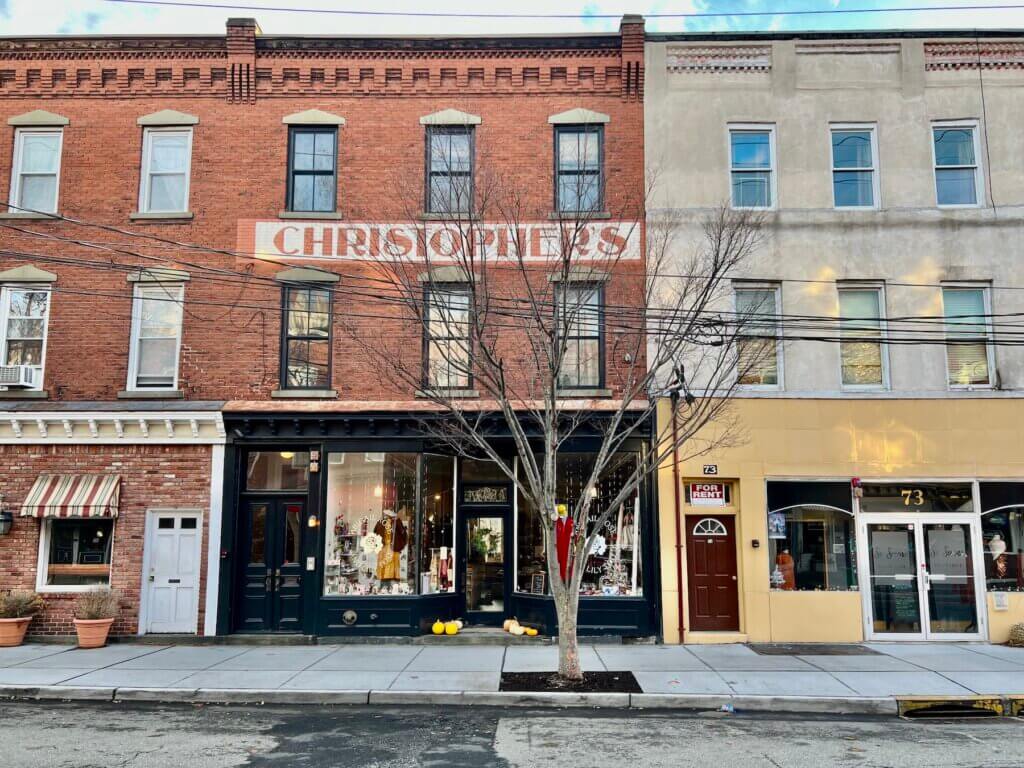
Not much remains from the antiques era of 1982. Gene Reed is still open on S. Broadway, and the words “Christopher’s” is still visible above the second floor of 73 S. Broadway. The new energy of the “antiques era” transformed Nyack into a quirkier and bluer village than it had been in mid-century. Suddenly, Nyack was a go-to place for young families from the city. The ambience of a city in the country is an attraction to this day.
Michael Hays is a 36-year resident of the Nyacks. Hays grew up the son of a professor and nurse in Champaign, Illinois. He has recently retired from a long career in educational publishing with Prentice-Hall and McGraw-Hill. He is an avid cyclist, amateur historian and photographer, gardener, and dog walker. Hays has enjoyed more years than he cares to count with his beautiful companion, Bernie Richey. You can follow him on Instagram as UpperNyackMike.

